Peak Load Shaving of Air Conditioning Loads via Rooftop Grid-Connected Photovoltaic Systems: A Case Study
Abstract
1. Introduction
- Presenting a peak shaving assessment of a GCPVS (without BESS integration) in an arid area, which has rarely been reported in the literature [23];
- Exploiting the high-resolution one-year recorded data of a 51 kW real GCPVS, raising the results’ reliability;
2. Description of Case Study
2.1. Photovoltaic Incentives in Iran
2.2. Mashhad City Hall Building’s Grid-Connected Photovoltaic System
3. Peak Load Shaving Indicators
4. Experimental Results
4.1. Peak Power Shaving
4.2. Self-Sufficiency
- The fixed FiT policy can be adopted for countries with stable economic conditions and a low electricity rate, e.g., most Middle Eastern countries located in the south of the Persian Gulf. Therefore, the owner sells the GCPVS’s generated energy at an interesting price (i.e., greater than the electricity rate).
- An increasing FiT rate over the contract term, named a dynamic FiT, can be used for countries with unstable economic conditions and a low electricity rate. In countries such as Turkey and Egypt, the net present value of the future incomes drops notably. Thus, this FiT rate increase covers the drop in the income’s net present value [33].
- Finally, countries with a high electricity rate can adopt the net metering approach so that GCPVSs supply some/all of the domestic load. Hence, the owner benefits from reduced electricity bills.
5. Conclusions
Author Contributions
Funding
Institutional Review Board Statement
Informed Consent Statement
Data Availability Statement
Conflicts of Interest
References
- Bollino, C.A.; Asdrubali, F.; Polinori, P.; Bigerna, S.; Micheli, S.; Guattari, C.; Rotili, A. A note on medium- and long-term global energy prospects and scenarios. Sustainability 2017, 9, 833. [Google Scholar] [CrossRef]
- World Energy Outlook 2023. 2023. Available online: https://www.iea.org/reports/world-energy-outlook-2023 (accessed on 16 April 2024).
- Space Cooling. Available online: www.iea.org/energy-system/buildings/space-cooling (accessed on 4 April 2024).
- Minoofar, A.; Gholami, A.; Eslami, S.; Hajizadeh, A.; Gholami, A.; Zandi, M.; Ameri, M.; Kazem, H.A. Renewable energy system opportunities: A sustainable solution toward cleaner production and reducing carbon footprint of large-scale dairy farms. Energy Convers. Manag. 2023, 293, 117554. [Google Scholar] [CrossRef]
- Cumulative Installed Solar PV Capacity Worldwide from 2000 to 2022. Available online: https://www.statista.com/statistics/280220/global-cumulative-installed-solar-pv-capacity/ (accessed on 16 April 2024).
- Bakhshi-Jafarabadi, R.; Sadeh, J.; Serrano-Fontova, A.; Rakhshani, E. Review on islanding detection methods for grid-connected photovoltaic systems, existing limitations and future insights. IET Renew. Power Gener. 2022, 16, 3406–3421. [Google Scholar] [CrossRef]
- Mohajer, F.; Kargar, H.K.; Salemnia, A.; Sadeh, J. Setting groups-based overcurrent relays coordination considering distributed generations uncertainties. In Proceedings of the 2023 International Conference on Protection and Automation of Power Systems (IPAPS), Tehran, Iran, 24–25 January 2023; pp. 1–6. [Google Scholar]
- León, L.F.; Martinez, M.; Ontiveros, L.J.; Mercado, P.E. Devices and Control strategies for voltage regulation under influence of photovoltaic distributed generation. a review. IEEE Lat. Am. Trans. 2022, 20, 731–745. [Google Scholar] [CrossRef]
- Cucchiella, F.; Rotilio, M.; Capannolo, L.; De Berardinis, P. Technical, economic and environmental assessment towards the sustainable goals of photovoltaic systems. Renew. Sustain. Energy Rev. 2023, 188, 113879. [Google Scholar] [CrossRef]
- Khourchid, A.M.; Al-Ansari, T.A.; Al-Ghamdi, S.G. Cooling energy and climate change nexus in arid climate and the role of energy transition. Buildings 2023, 13, 836. [Google Scholar] [CrossRef]
- de Oliveira e Silva, G.; Hendrick, P. Photovoltaic self-sufficiency of Belgian households using lithium-ion batteries, and its impact on the grid. Appl. Energy 2017, 195, 786–799. [Google Scholar] [CrossRef]
- Kelepouris, N.S.; Nousdilis, A.I.; Bouhouras, A.S.; Christoforidis, G.C.; Yerasimou, Y.; Chatzigeorgiou, N.G.; Georghiou, G.E.; Celli, G.; Mocci, S.; Gal, E.; et al. Impact of demand side management on the self-sufficiency and self-consumption of buildings with photovoltaic and storage systems. In Proceedings of the 2021 9th International Conference on Modern Power Systems (MPS), Cluj-Napoca, Romania, 16–17 June 2021; pp. 1–6. [Google Scholar]
- Pater, S. Increasing energy self-consumption in residential photovoltaic systems with heat pumps in Poland. Energies 2023, 16, 4003. [Google Scholar] [CrossRef]
- Qiu, Z.; Luo, Y.; Wang, Y.; Wang, Y.; Mao, Y.; Li, C. Battery energy storage application: Regulation and peak shaving for a photovoltaic-equipped community. In Proceedings of the 2022 IEEE 6th Conference on Energy Internet and Energy System Integration (EI2), Chengdu, China, 11–13 November 2022; pp. 2089–2094. [Google Scholar]
- Thango, B.A.; Bokoro, P.N. Battery Energy Storage for Photovoltaic Application in South Africa: A Review. Energies 2022, 15, 5962. [Google Scholar] [CrossRef]
- Schram, W.L.; Lampropoulos, I.; van Sark, W. Photovoltaic systems coupled with batteries that are optimally sized for household self-consumption: Assessment of peak shaving potential. Appl. Energy 2018, 223, 69–81. [Google Scholar] [CrossRef]
- Jankowiak, C.; Zacharopoulos, A.; Brandoni, C.; Keatley, P.; MacArtain, P.; Hewitt, N. Assessing the benefits of decentralised residential batteries for load peak shaving. J. Energy Storage 2020, 32, 101779. [Google Scholar] [CrossRef]
- Abul’Wafa, A.R. Energy storage sizing for rooftop grid-connected PV system. Electr. Power Compon. Syst. 2017, 45, 331–343. [Google Scholar] [CrossRef]
- Dufo-López, R.; Bernal-Agustín, J.L. Techno-economic analysis of grid-connected battery storage. Energy Convers. Manag. 2015, 91, 394–404. [Google Scholar] [CrossRef]
- Worighi, I.; Geury, T.; El Baghdadi, M.; Van Mierlo, J.; Hegazy, O.; Maach, A. Optimal design of hybrid PV-battery system in residential buildings: End-user economics, and PV penetration. Appl. Sci. 2019, 9, 1022. [Google Scholar] [CrossRef]
- Díaz-González, F.; Chillón-Antón, C.; Llonch-Masachs, M.; Galceran-Arellano, S.; Rull-Duran, J.; Bergas-Jané, J.; Bullich-Massagué, E. A hybrid energy storage solution based on supercapacitors and batteries for the grid integration of utility scale photovoltaic plants. J. Energy Storage 2022, 51, 104446. [Google Scholar] [CrossRef]
- Ashoornezhad, A.; Falaghi, H.; Hajizadeh, A.; Ramezani, M. Feasibility study on the integration of residential PV-battery systems in system peak load shaving: A case study in Iran. IET Gener. Transm. Distrib. 2023, 17, 3100–3113. [Google Scholar] [CrossRef]
- Alkelbi, A.M.; Abbas, M.; Eltamaly, A.M. Economical study on load shaving by PV implementation for bulk customers in Riyadh. In Proceedings of the 2021 6th International Conference on Renewable Energy: Generation and Applications (ICREGA), Al Ain, United Arab Emirates, 2–4 February 2021; pp. 237–242. [Google Scholar]
- Syafii; Zaini; Juliandri, D.; Akbar, Y. Design of PV system for electricity peak-shaving: A case study of faculty of engineering, Andalas university. In Proceedings of the 2018 International Conference on Computing, Power and Communication Technologies (GUCON), Greater Noida, India, 28–29 September 2018; pp. 294–298. [Google Scholar]
- Wang, R.; Lam, C.M.; Alvarado, V.; Hsu, S.-C. A modeling framework to examine photovoltaic rooftop peak shaving with varying roof availability: A case of office building in Hong Kong. J. Build. Eng. 2021, 44, 103349. [Google Scholar] [CrossRef]
- Ceran, B.; Jurasz, J.; Mielcarek, A.; Campana, P.E. PV systems integrated with commercial buildings for local and national peak load shaving in Poland. J. Clean. Prod. 2021, 322, 129076. [Google Scholar] [CrossRef]
- Jurasz, J.; Campana, P.E. The potential of photovoltaic systems to reduce energy costs for office buildings in time-dependent and peak-load-dependent tariffs. Sustain. Cities Soc. 2019, 44, 871–879. [Google Scholar] [CrossRef]
- Bakhshi–Jafarabadi, R.; Sadeh, J.; Soheili, A. Global optimum economic designing of grid-connected photovoltaic systems with multiple inverters using binary linear programming. Sol. Energy 2019, 183, 842–850. [Google Scholar] [CrossRef]
- Aien, M.; Mahdavi, O. On the way of policy making to reduce the reliance of fossil fuels: Case study of Iran. Sustainability 2020, 12, 606. [Google Scholar] [CrossRef]
- Mehrsun National Platform. Available online: www.solar.meedc.ir/cp/home (accessed on 28 March 2024).
- Asadi, M.; Larki, I.; Forootan, M.M.; Ahmadi, R.; Farajollahi, M. Long-term scenario analysis of electricity supply and demand in Iran: Time series analysis, renewable electricity development, energy efficiency and conservation. Sustainability 2023, 15, 4618. [Google Scholar] [CrossRef]
- IEA. Renewables 2023; IEA: Paris, France, 2024. [Google Scholar]
- Bakhshi, R.; Sadeh, J. Economic evaluation of grid–connected photovoltaic systems viability under a new dynamic feed–in tariff scheme: A case study in Iran. Renew Energy 2018, 119, 354–364. [Google Scholar] [CrossRef]
- Bakhshi-Jafarabadi, R.; Keramatpour, A. Economic assessment of residential hybrid photovoltaic-battery energy storage system in Iran. In Proceedings of the 2022 9th Iranian Conference on Renewable Energy & Distributed Generation (ICREDG), Mashhad, Iran, 23–24 February 2022; pp. 1–5. [Google Scholar]
- TBM72-375M Datasheet. Available online: www.tabanenergy.ir/wp-content/pdf/catalogue5BB-Mono-Feb2019.pdf (accessed on 29 March 2024).
- Fronius Eco 25.0-3-S Datasheet. Available online: www.fronius.com/en/solar-energy/installers-partners/technical-data/all-products/inverters/fronius-eco/fronius-eco-25-0-3-s (accessed on 29 March 2024).
- International Monetary Fund Inflation Rate, Average Consumer Prices. Available online: https://www.imf.org/external/datamapper/PCPIPCH@WEO/WEOWORLD (accessed on 30 May 2024).
- Global Solar Atlas. Available online: https://globalsolaratlas.info (accessed on 30 May 2024).
- Global Petrol Prices Electricity Prices for Households. Available online: https://www.globalpetrolprices.com/electricity_prices (accessed on 30 May 2024).
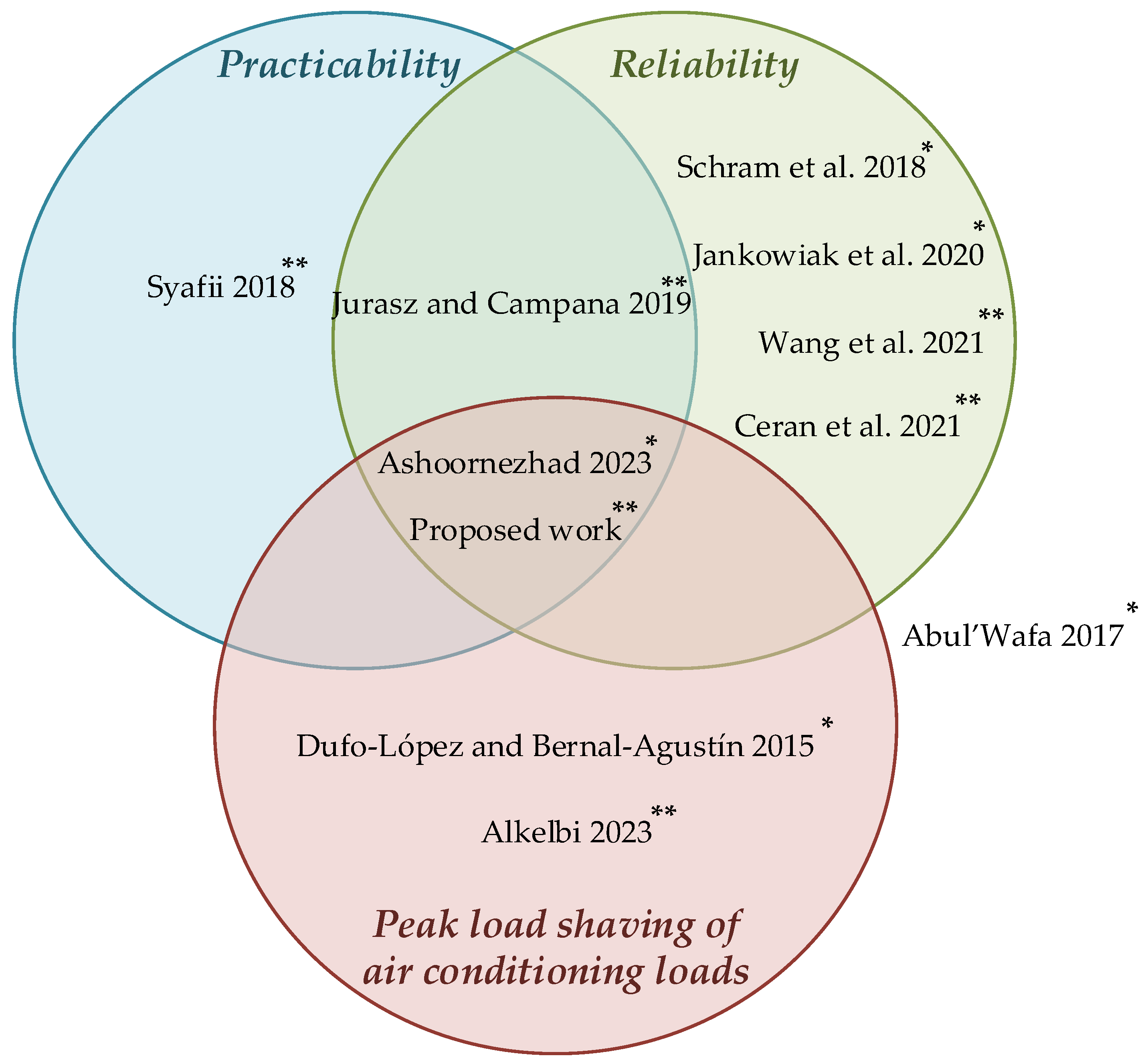
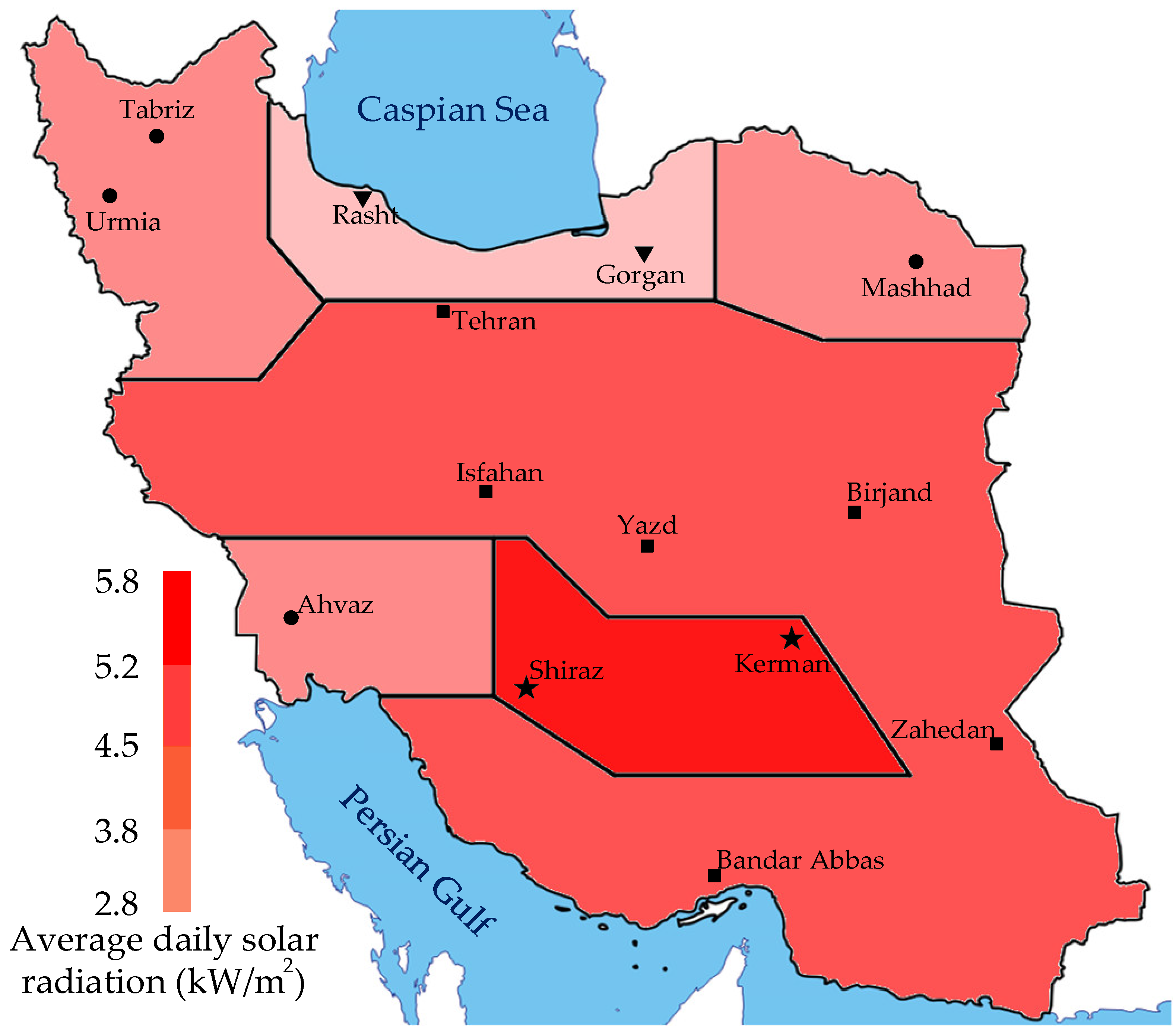
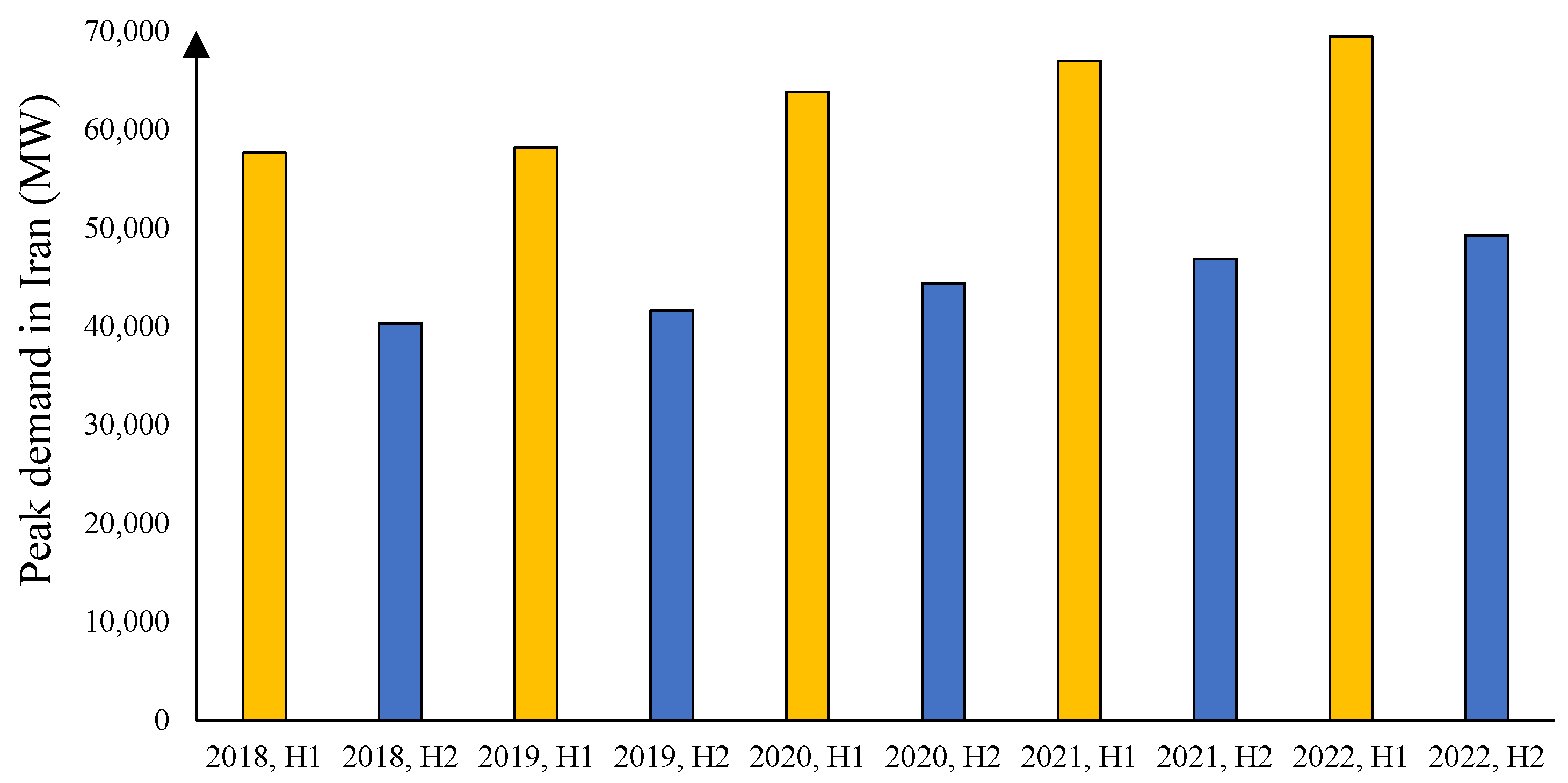

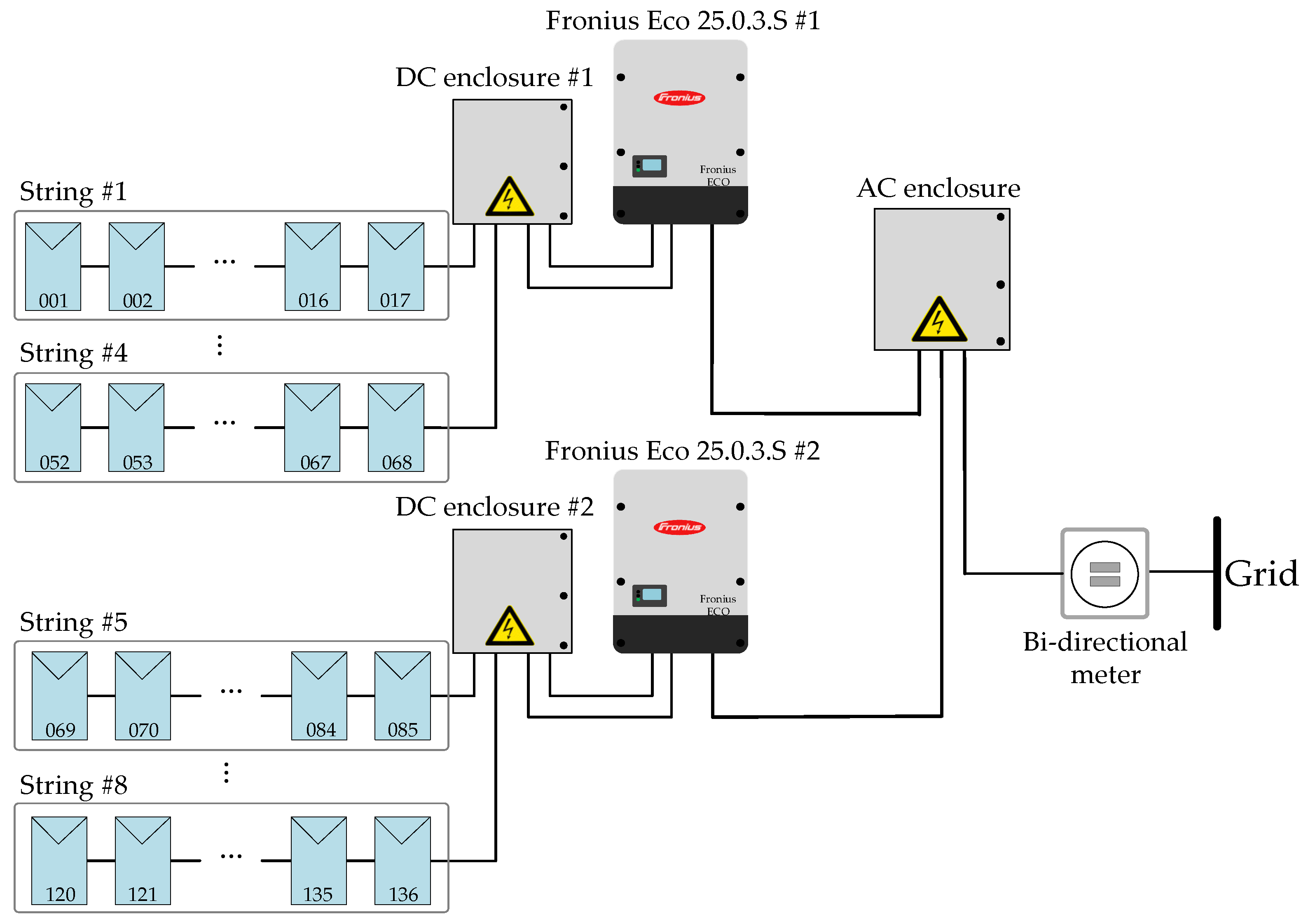
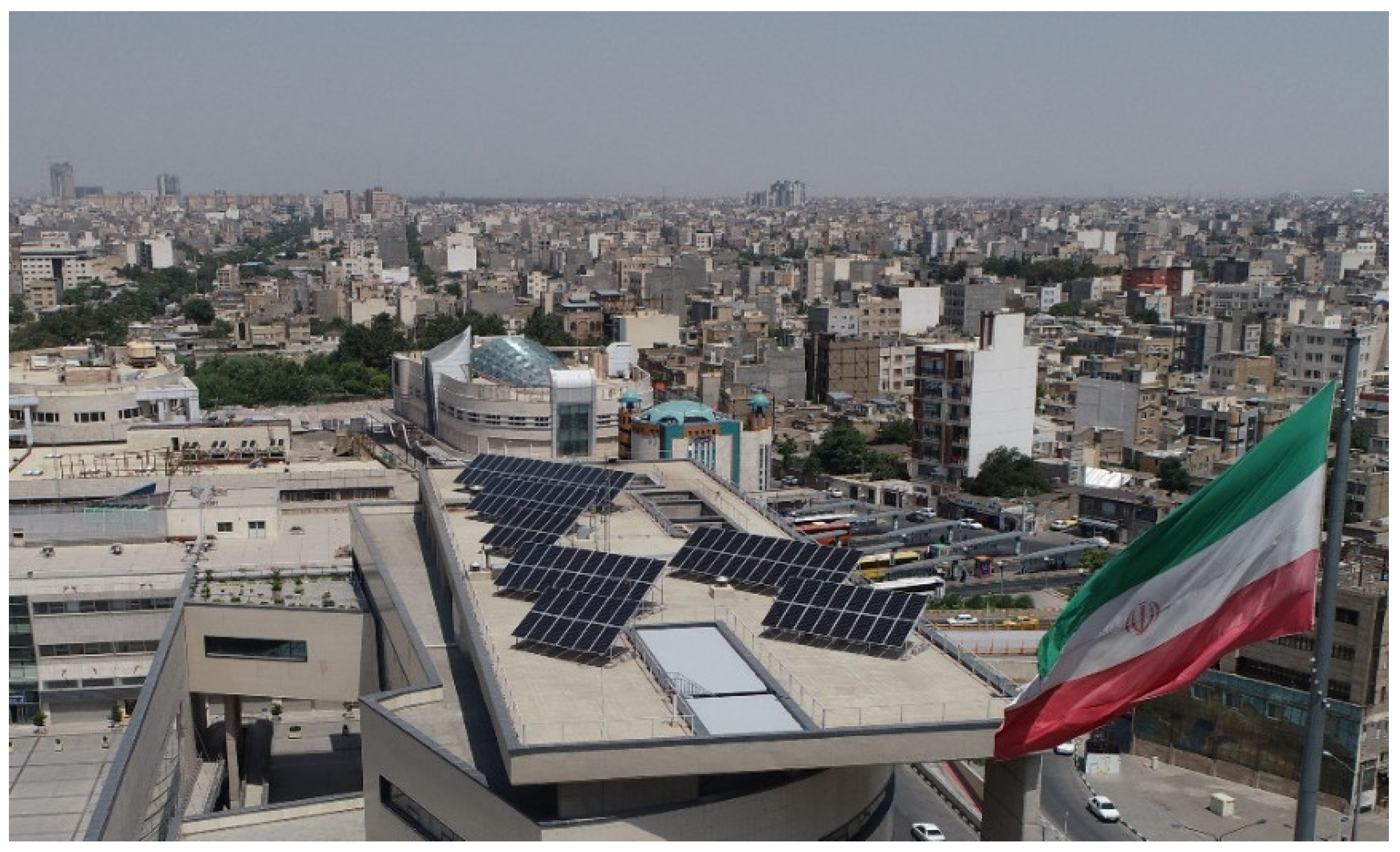

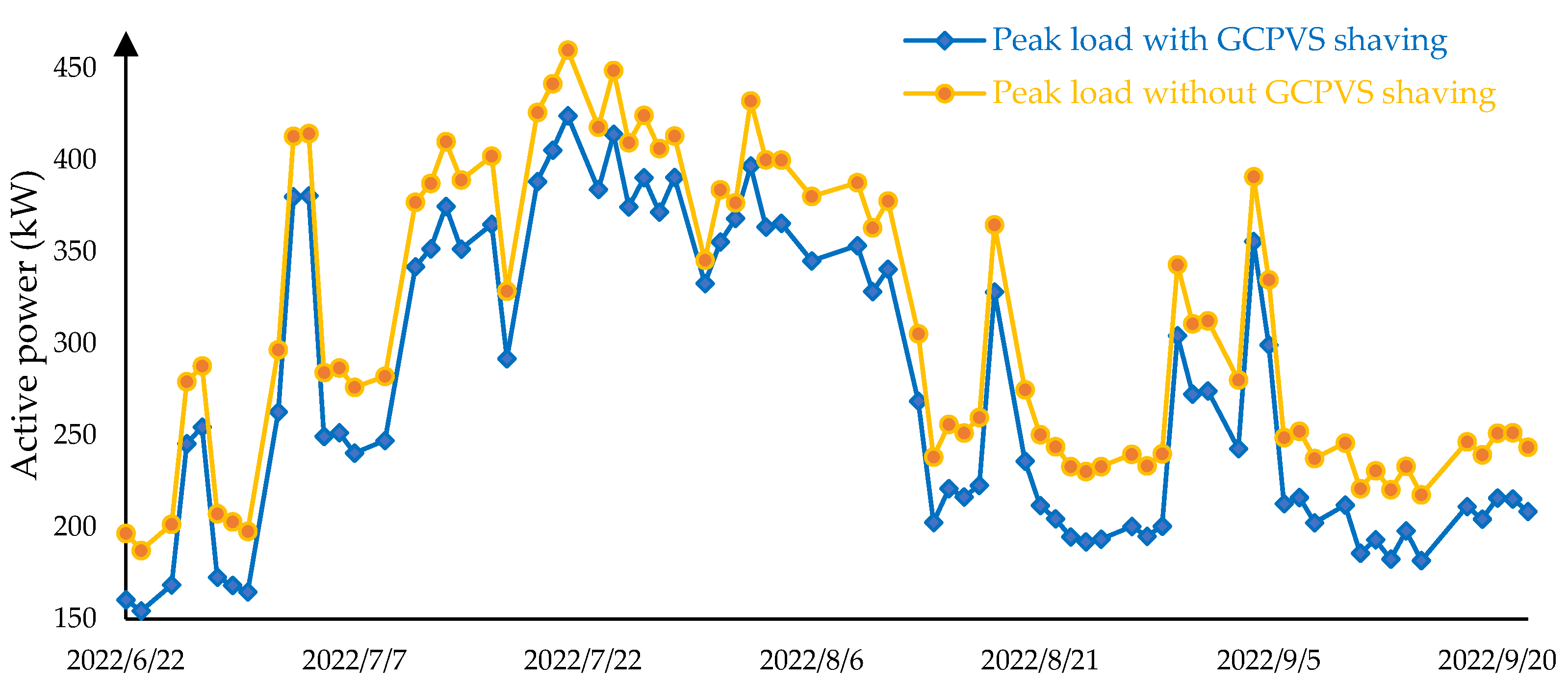
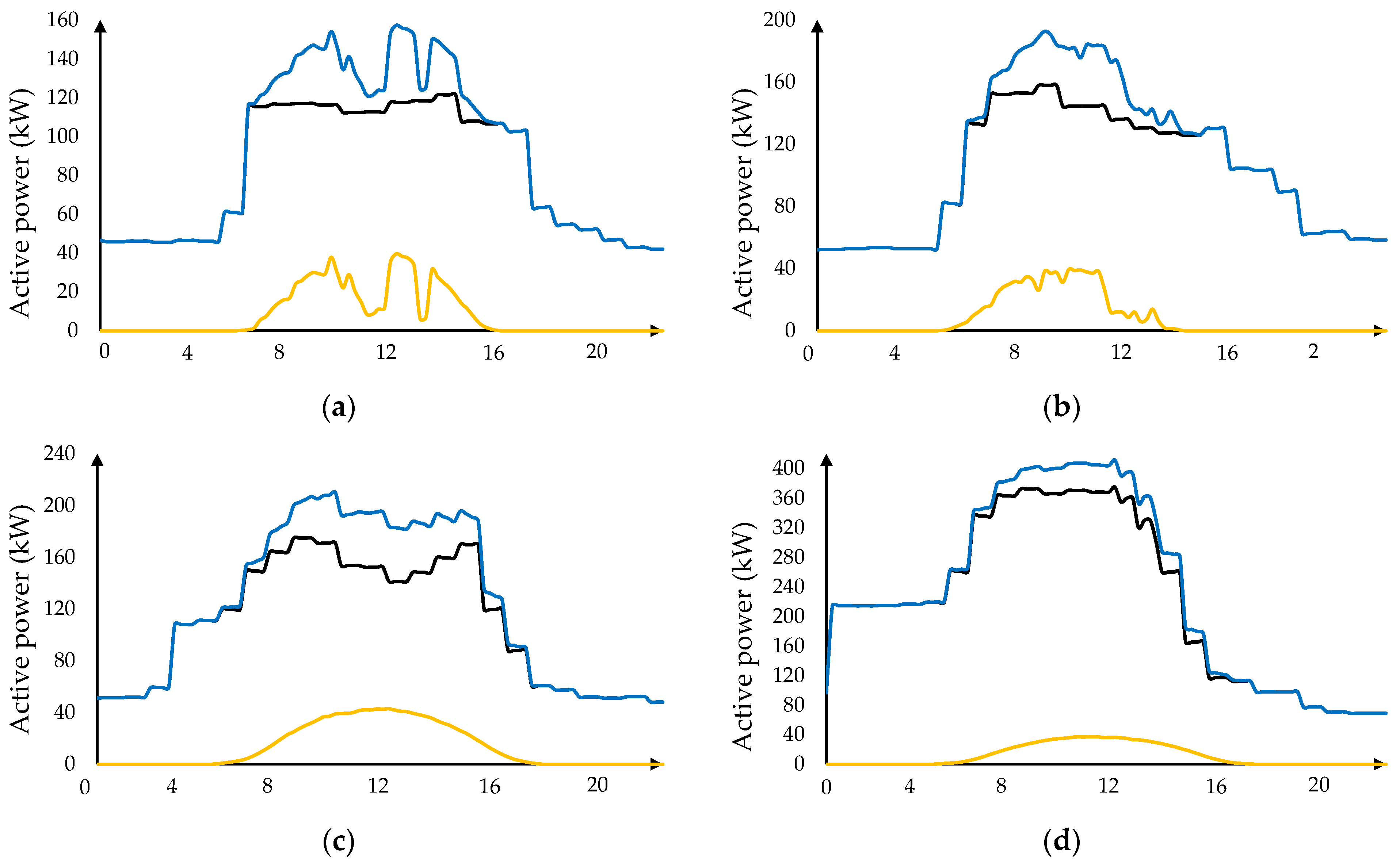
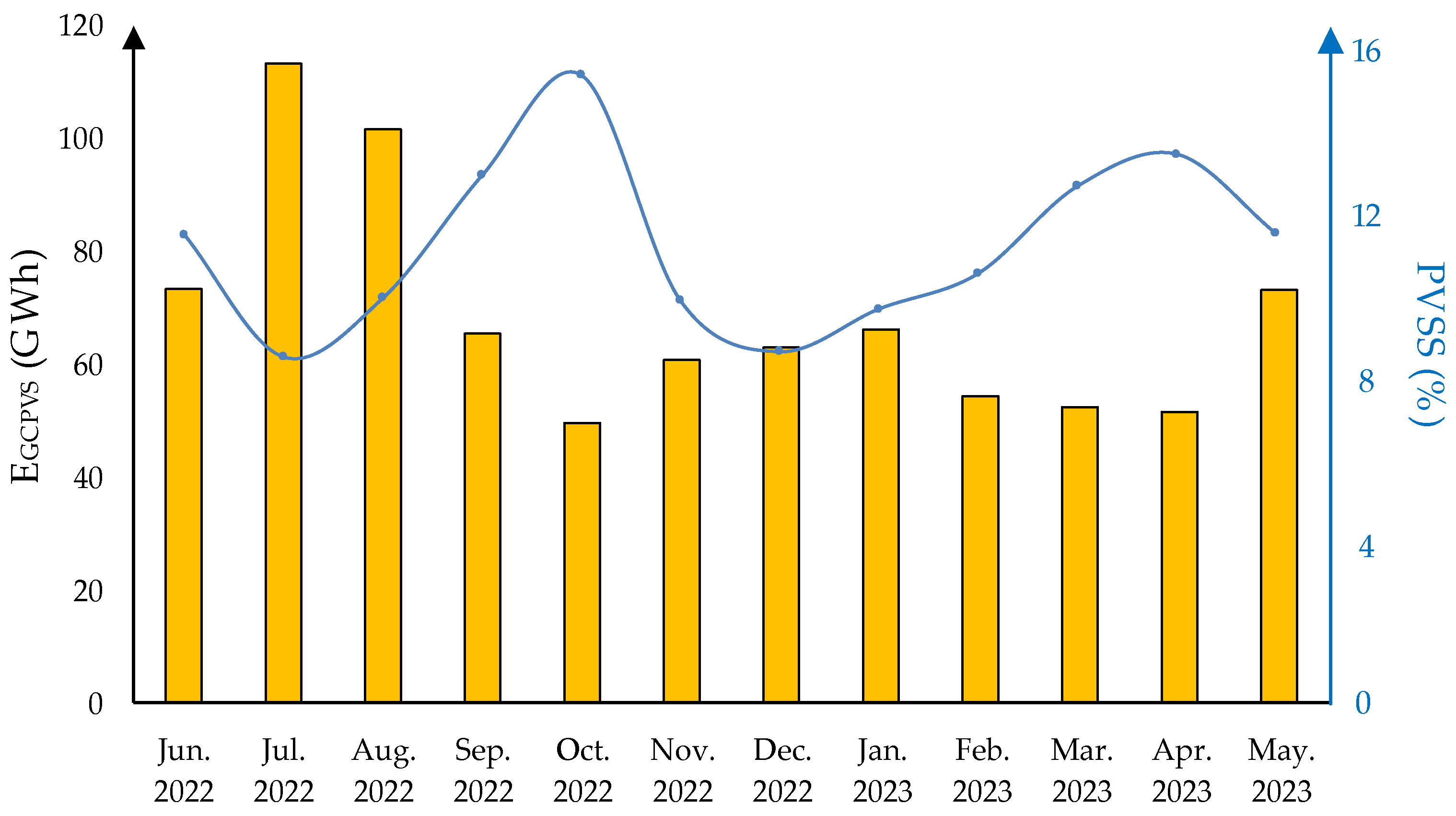
| TBM72-375M [35] | Fronius Eco 25.0-3-S [36] | ||
|---|---|---|---|
| MPP power | 375 W | MPP voltage range | 580–850 V |
| MPP voltage | 39.79 V | Maximum input voltage | 1000 V |
| MPP current | 9.43 A | Maximum input current | 44.2 A |
| Open-circuit voltage | 48.18 V | Maximum PV power | 37.5 kW |
| Short-circuit current | 9.91 A | Number of MPP | 1 |
| Temperature coefficient of voltage | 0.06%/°C | Maximum number of strings | 6 |
| Temperature coefficient of current | −0.30%/°C | Maximum output power | 25 kW |
| Temperature coefficient of power | −0.39%/°C | ||
| Country | Economic Condition [37] 1 | Solar Potential (kWh/kWp) [38] | Household Electricity Rate (Cent EUR/kWh) [39] | Proposed Policy |
|---|---|---|---|---|
| Qatar | Stable (−2.5 to 5.0%) | 4.8–4.9 | 3.0 | Fixed FiT |
| UAE | Stable (−2.1 to 4.8%) | 4.9–5.1 | 7.4 | Fixed FiT |
| Saudi Arabia | Stable (2.5 to 3.4%) | 4.9–5.1 | 4.4 | Fixed FiT |
| Oman | Stable (−0.6 to 2.5%) | 4.9–5.1 | 2.4 | Fixed FiT |
| Bahrain | Stable (−2.3 to 3.6%) | 4.7–4.9 | 4.4 | Fixed FiT |
| Iraq | Stable (0.6 to 4.0%) | 4.5–5.1 | 1.4 | Fixed FiT |
| Egypt | Unstable (4.5 to 24.4%) | 5.0–5.5 | 1.6 | Dynamic FiT |
| Spain | Stable (0.5 to 10.8%) | 4.1–4.6 | 22.0 | Net metering |
| Turkey | Unstable (11.4 to 85.5%) | 4.0–4.7 | 4.7 | Dynamic FiT |
| Australia | Stable (0.9 to 6.6%) | 4.9–5.3 | 26.0 | Net metering |
| Mexico | Stable (3.4 to 7.9%) | 4.4–5.4 | 10.0 | Fixed FiT |
Disclaimer/Publisher’s Note: The statements, opinions and data contained in all publications are solely those of the individual author(s) and contributor(s) and not of MDPI and/or the editor(s). MDPI and/or the editor(s) disclaim responsibility for any injury to people or property resulting from any ideas, methods, instructions or products referred to in the content. |
© 2024 by the authors. Licensee MDPI, Basel, Switzerland. This article is an open access article distributed under the terms and conditions of the Creative Commons Attribution (CC BY) license (https://creativecommons.org/licenses/by/4.0/).
Share and Cite
Bakhshi-Jafarabadi, R.; Seyed Mousavi, S.M. Peak Load Shaving of Air Conditioning Loads via Rooftop Grid-Connected Photovoltaic Systems: A Case Study. Sustainability 2024, 16, 5640. https://doi.org/10.3390/su16135640
Bakhshi-Jafarabadi R, Seyed Mousavi SM. Peak Load Shaving of Air Conditioning Loads via Rooftop Grid-Connected Photovoltaic Systems: A Case Study. Sustainability. 2024; 16(13):5640. https://doi.org/10.3390/su16135640
Chicago/Turabian StyleBakhshi-Jafarabadi, Reza, and Seyed Mahdi Seyed Mousavi. 2024. "Peak Load Shaving of Air Conditioning Loads via Rooftop Grid-Connected Photovoltaic Systems: A Case Study" Sustainability 16, no. 13: 5640. https://doi.org/10.3390/su16135640
APA StyleBakhshi-Jafarabadi, R., & Seyed Mousavi, S. M. (2024). Peak Load Shaving of Air Conditioning Loads via Rooftop Grid-Connected Photovoltaic Systems: A Case Study. Sustainability, 16(13), 5640. https://doi.org/10.3390/su16135640







